India has witnessed a significant revolution in wheat farming thanks to the adoption of high-yielding hybrid wheat varieties. These cultivars have not only transformed the agricultural landscape but have also increased farmers’ profits. In this blog, we will delve into the world of hybrid wheat cultivars in India, exploring their characteristics, benefits, and impact on agricultural profitability. Get ready to discover how science and innovation are pivotal in ensuring the country’s food security and economic growth.
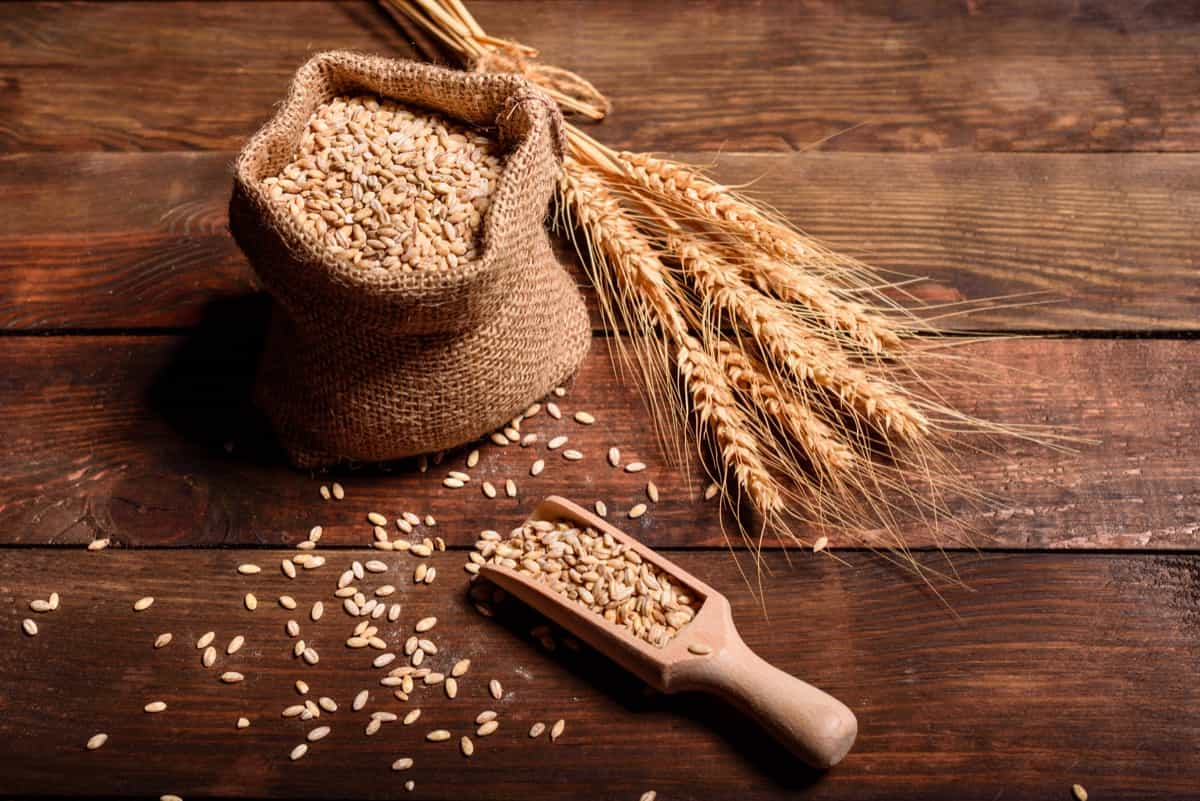
What are High-Yielding Wheat Varieties?
High-yielding wheat varieties are specially bred strains of wheat that produce significantly larger quantities of wheat grains per unit of land when compared to traditional or older wheat varieties. These varieties are the result of extensive scientific research and selective breeding processes. They are designed to be more resilient, disease-resistant, and capable of adapting to varying environmental conditions.
One notable example in India is the “Sonalika” variety, known for its high yield and adaptability to diverse climates. These wheat varieties typically have shorter growth cycles, allowing for multiple harvests in a year. High-yielding wheat varieties have revolutionized Indian agriculture by substantially increasing wheat production. This ensures food security and boosts farmers’ incomes, making agriculture a more profitable venture.
High-Yielding Wheat Varieties in India
DBW 296 (Karan Aishwarya)
DBW 296, also known as Karan Aishwarya, is a breakthrough in wheat cultivation developed by the ICAR Karnal, India. This high-yielding bread wheat variety is a game-changer for farmers in the North-Western Plains Zone (NWPZ) of India, encompassing regions like Punjab, Haryana, Delhi, Rajasthan, western Uttar Pradesh, parts of Jammu and Kashmir, Himachal Pradesh, and Uttarakhand.
Impressive Yields: DBW 296 boasts a remarkable yield potential of 83.3 quintals per hectare (q/ha), making it a high-yield wheat variety. Even with only two irrigations, it achieves an average yield of 56.1 q/ha.
Grain Characteristics: The grains of DBW 296 are soft to semi-hard, oblong in shape, and have an attractive amber color. Its 1000-grain weight averages around 43 grams. Farmers and consumers alike benefit from DBW 296. It is suitable for various end-use products, including bread, chapati, and naan, making it versatile.
Disease Resistance: DBW 296 demonstrates robust resistance to common wheat diseases, such as yellow, brown, and black rusts, as well as other foliar diseases. This resistance ensures healthier crops and reduces the need for expensive fungicides, potentially saving farmers around ₹2200 per hectare.
In case you missed it: Weed Management in Wheat Farming: How to Control with Organic, Chemical and Cultural Practices

DBW 327 (Karan Shivani)
Impressive Yields: DBW 327, known as Karan Shivani, is a high-yielding bread wheat variety with remarkable agricultural performance. It achieves an average yield of 79.4 quintals per hectare (q/ha) and boasts a potential yield of 87.7 q/ha, making it an excellent choice for wheat cultivation.
Optimal Conditions: For optimal results, DBW 327 is recommended to be sown early, typically between October 20 and November 5. It thrives in high-input conditions, requiring 150% of the recommended NPK (nitrogen, phosphorus, and potassium) fertilizers. Additionally, two sprays of growth retardants, such as Chlormequat chloride and tebuconazole, are advised at specific growth stages.
Geographic Suitability: This wheat variety is well-suited for cultivation in the North Western Plains Zone, which includes regions like Punjab, Haryana, Delhi, Rajasthan Western Uttar Pradesh, parts of Jammu and Kashmir, parts of Himachal Pradesh, and Uttarakhand (Tarai region).
Disease Resistance: DBW 327 exhibits robust resistance to common wheat diseases, such as stripe and leaf rust. It has proven its resilience against predominant races of stripe rust and displays better resistance against Karnal bunt. This resistance ensures healthy crops and reduces the need for disease management measures, benefiting farmers.
DBW 332 (Karan Aditya)
DBW 332, known as Karan Aditya, is a notable high-yielding wheat variety that has received official recognition from the Central Sub-Committee on Crop Standard Government of India. This recognition signifies its suitability for widespread cultivation.
Optimal Cultivation Conditions: For optimal performance, it is recommended to sow DBW 332 during the early season, typically between October 20 and November 5. It thrives in high input levels, requiring 150% of the recommended NPK (nitrogen, phosphorus, and potassium) fertilizers. Additionally, to enhance growth, two sprays of growth retardants, such as Chlormequat chloride and tebuconazole, are advised at specific growth stages.
Geographic Suitability: This wheat variety is ideally suited for cultivation in the North Western Plains, which includes regions like Punjab, Haryana, Delhi, Rajasthan (excluding Kota and Udaipur divisions), Western Uttar Pradesh, parts of Jammu and Kashmir, parts of Himachal Pradesh, and Uttarakhand.
Impressive Yields: DBW 332 showcases impressive yields, with an average yield of 78.3 quintals per hectare (q/ha) and a potential yield of 83.0 q/ha. This makes it a valuable choice for farmers seeking high productivity.
In case you missed it: Wheat Farming with Zero Tillage: Benefits, Challenges, and Best Practices
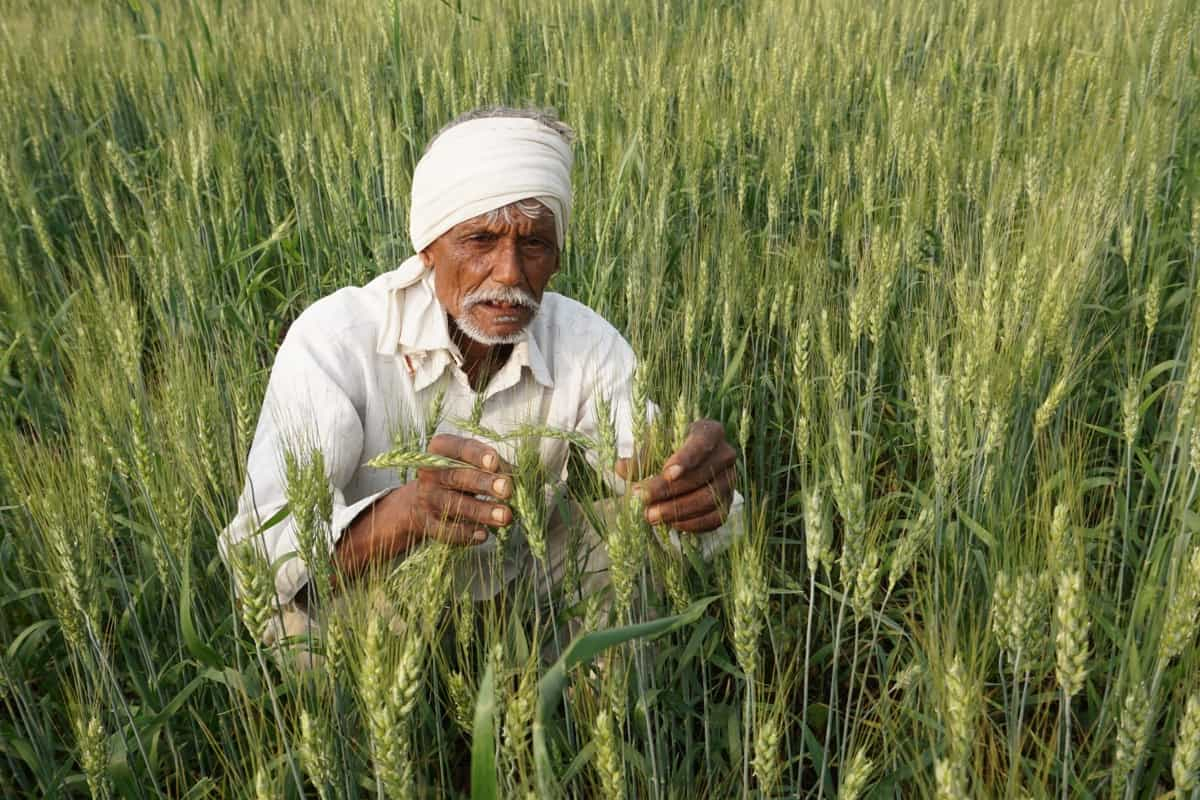
Disease Resistance: One of its notable features is its high resistance to common wheat diseases, specifically stripe and leaf rust. This resistance ensures healthier crops and minimizes the need for disease management measures, contributing to overall farm profitability.
DBW 303 (Karan Vaishnavi)
DBW 303, known as Karan Vaishnavi, is a high-yielding wheat variety officially notified in 2021. This recent notification indicates its suitability for cultivation in specific regions.
Optimal Cultivation Conditions: For the best results, DBW 303 is recommended for early sowing in irrigated areas of the North Western plains of India. These regions encompass Punjab, Haryana, Delhi, Rajasthan (excluding Kota and Udaipur divisions), Western Uttar Pradesh, Jammu and Kashmir, Himachal Pradesh and parts of Uttarakhand (Terai region).
Ideal Sowing Time: The ideal time for early sowing of DBW 303 falls between October 25 and November 5. This timing aligns with the agricultural calendar for this variety.
Growth Management: To maximize yield, two applications of growth controllers are recommended. Specifically, Chlormequat chloride (CCC) at a concentration of 0.2% and Tebuconazole 250 EC at 0.1% are advised during early sowing. Additionally, applying 150% of the recommended NPK (nitrogen, phosphorus, and potassium) fertilizers, focusing on the first node and flag leaf stages, is beneficial.
Impressive Yields: DBW 303 exhibits impressive average yields, reaching 81.2 quintals per hectare (qtl/ha). This makes it an attractive choice for farmers seeking high wheat productivity.
DBW 187 (Karan Vandana)
DBW 187, also known as Karan Vandana, was released and officially notified in different years for specific zones: 2019 in the North Eastern Plains Zone (NEPZ) and 2020 & 2021 in the North Western Plains Zone (NWPZ). This variety has gained recognition for its exceptional performance in wheat farming.
Native Range: Karan Vandana is native to several regions, including Punjab, Haryana, Delhi, Rajasthan (except Kota and Udaipur divisions), western Uttar Pradesh, Himachal Pradesh, parts of Jammu and Kashmir , and Uttarakhand. It thrives in irrigated areas and is well-suited for timely sowing.
Sowing Options:
- Early Sowing (October 25 to November 5): Ideal for achieving high yields.
- Timely Sowing (November 5 to November 25): Suitable for ensuring a good wheat crop.
Impressive Yields: Karan Vandana exhibits an average yield of 61.3 quintals per hectare, making it a high-yield wheat variety. To achieve optimal results, early sowing on October 25 with NPK (225 kg Nitrogen, 90 kg phosphorus, and 60 kg potassium per hectare) and two sprays of growth regulators, such as Chlormequat chloride (CCC) at 0.2% and Tebuconazole 250 EC at 0.1% (before the node and flag leaf stages), is recommended.
Growth Regulator Application: Mix 200 ml of Chlormequat chloride in 100 liters of water and 100 ml of Tebuconazole per acre for growth regulator application.
DBW 222 (Karan Narendra)
DBW 222, known as Karan Narendra, was released and officially notified in 2020. It has gained its exceptional performance in specific regions, including Punjab, Haryana, Delhi, Rajasthan, Uttar Pradesh, Himachal Pradesh, Jammu and Kashmir, and Uttarakhand. This variety is ideally suited for irrigated time sowing conditions.
- Optimal Sowing Time: The ideal sowing period for Karan Narendra falls between November 5 and November 25, ensuring favorable conditions for its growth and yield.
- Impressive Yields: Karan Narendra showcases an average yield of 61.3 quintals per hectare, making it a high-yield wheat variety. Farmers can benefit from its consistent productivity.
WH1270
WH1270 is another high-yielding wheat variety released for farming in the North Western Plain of India, encompassing regions such as Punjab, Haryana, Delhi, Rajasthan, Western UP parts of J&K (Jammu & Kathua district.), parts of H.P and Uttarakhand.
Early Sowing Benefits: Early sowing, ideally during the last week of October, significantly increases the yield potential of WH1270, enhancing it by 4 to 8 quintals per acre.
Yield Potential: With proper sowing, fertilizer application, and regular watering as per university recommendations, WH1270 can achieve an average yield of 75.8 quintals per hectare, with the potential to reach a maximum of 91.5 quintals per hectare.
In case you missed it: Wheat Farming in the USA: By State and Production
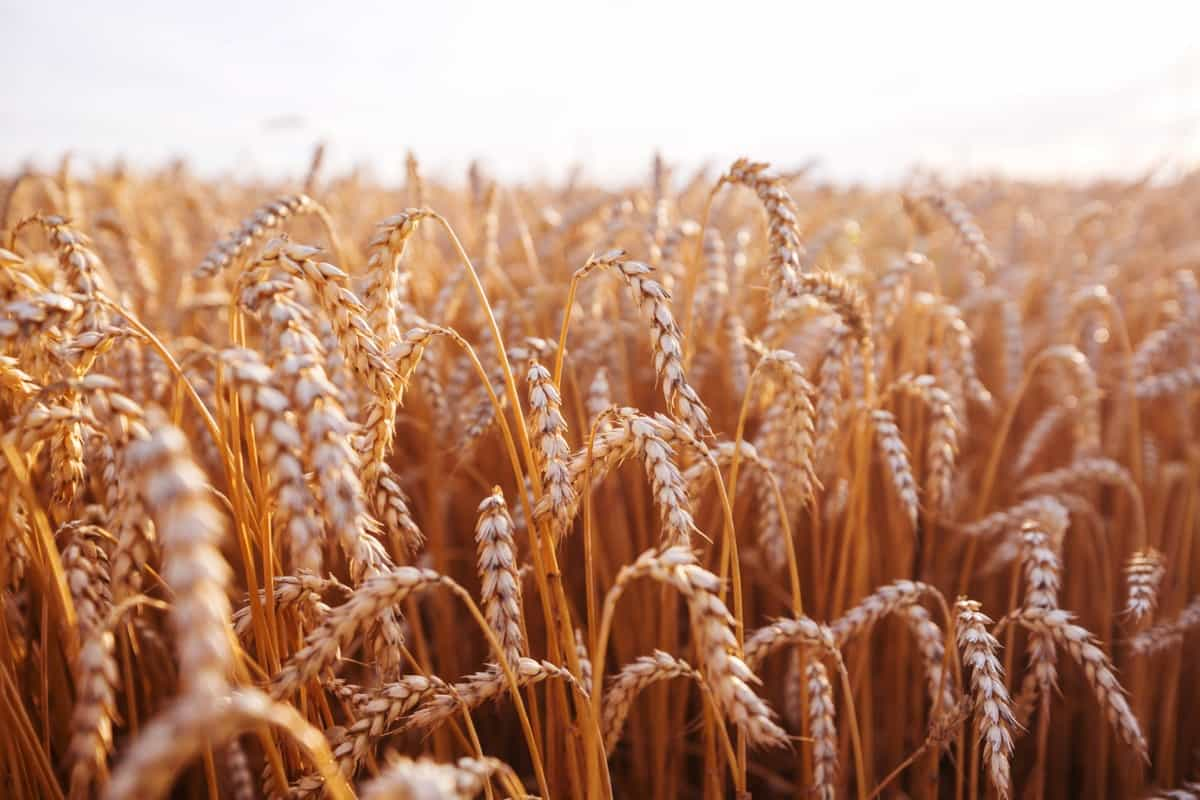
Disease Resistance: This variety displays a commendable degree of resistance to common wheat diseases in the region, including yellow and brown rusts, flag smut, leaf blight, and powdery mildew.
Maturity and Height: WH1270 matures in 156 days and reaches an average height of up to 100 cm, which prevents lodging (falling over) in the field.
High Protein Content: WH1270 stands out with its higher protein content than other wheat varieties, making it a nutritious choice.
PBW 771
- Disease Resistance: PBW 771 is a high-yielding wheat variety with remarkable leaf and stripe rust resistance, making it an excellent choice for disease-prone regions.
- Optimal Sowing Conditions: It is best suited for late sowing under irrigated conditions, allowing farmers flexibility in their planting schedule.
- Impressive Yields: While PBW 771 boasts an average yield of 54 quintals per hectare, it is valued for its disease resistance rather than exceptionally high yields.
- Maturity and Recommended Regions: This variety matures in just 120 days and is recommended for cultivation in regions such as Punjab, Haryana, Delhi, Rajasthan, Western Uttar Pradesh, Jammu & Kathua district of Jammu & Kashmir, Paonta Valley, Una district of Himachal Pradesh, and the Tarai region of Uttarakhand.
HD 3226
Disease Resistance: HD 3226 is a robust wheat variety known for its resistance to various diseases, including Yellow, Brown, Black rust, Karnal bunt, Powdery mildew, loose smut, and foot rot.
Impressive Yields and Quality: This variety offers an average yield of 57.5 quintals per hectare, with a genetic yield potential of 79.60 quintals per hectare. It features high protein content, good gluten quality, excellent grain appearance, and suitability for various end-use products.
Agronomic Practices: HD 3226 is recommended for irrigated, timely sown conditions. Specific agronomic practices include a seed rate of 100 kg/ha, sowing between November 5 and November 25, and precise fertilizer application.
Yield Maximization: It is advised to sow this variety for optimal yield in the second fortnight of October. Proper nitrogen management and two sprays of growth regulators, Chlormequat chloride and tebuconazole, at the First Node and Flag leaf stages, contribute to yield maximization.
HI 1620
HI 1620 is a high-yielding wheat variety well-suited for specific regions, including Punjab, Haryana, Delhi, Rajasthan (excluding Kota and Udaipur Divisions), Western Uttar Pradesh (excluding Jhansi Division), parts of Jammu & Kashmir (Kathua district), parts of Himachal Pradesh (Una district & Paonta Valley), and Uttarakhand (Tarai region). It is particularly effective when grown under timely sown restricted irrigation conditions.
In case you missed it: Top 20 Steps to Boost Wheat Yield: How to Increase Wheat Production
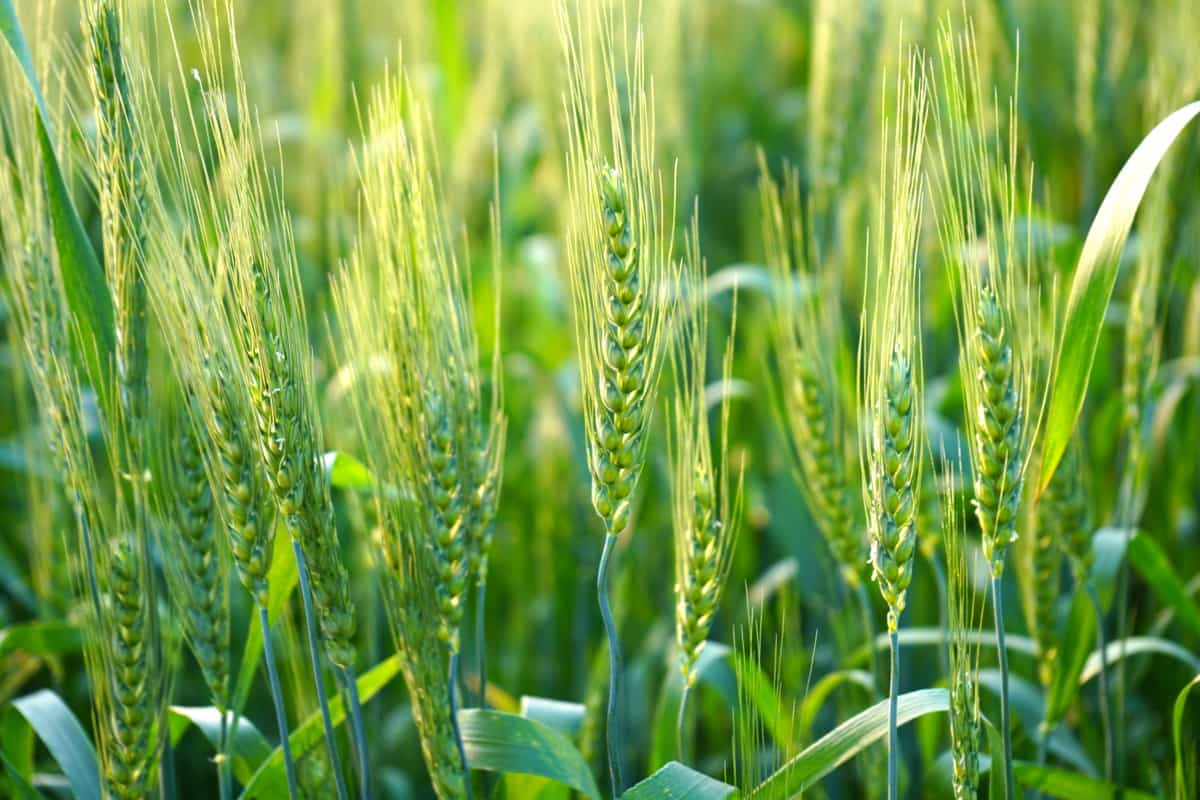
Cultivation Practices
- Field Preparation: The best conditions for this variety involve flat, fertile soil prepared through pre-sowing irrigation and plowing with a disc harrow, tiller, and leveler.
- Seed Treatment: To protect against termite infestation, treating the seeds with Imidacloprid or Chlorpyriphos is recommended. For general seed treatment, Vitavax is advised.
- Sowing Time: The ideal sowing period for HI 1620 falls between October 25 and November 5.
- Seed Rate: Optimal results are achieved with a 100 kg/ha seed rate using line sowing with a row-to-row distance of 20 cm.
- Fertilizer Dose: A balanced fertilizer dose of 90:60:40 (N:P: K) is recommended, with half the nitrogen applied at sowing and the other half at the first node stage.
- Weed Control: Effective weed control involves using specific herbicides based on the types of weeds present.
- Disease and Pest Control: HI 1620 is resistant to stripe and leaf rust, but if needed, foliar sprays of propiconazole, triademefone, or tebucanazole can be applied.
- Irrigation: One irrigation is typically needed, with the first at 35-40 days after sowing.
- Harvesting: The variety matures in an average of 145 days, with a potential yield ranging from 36.30 quintals per hectare to 63.1 quintals per hectare, making it a valuable choice for wheat farmers in the specified regions.
High-Yielding Wheat Varieties Developed By IIWBR
The Indian Institute of Wheat and Barley Research (IIWBR) has developed outstanding wheat varieties for farmers across India. DDW 47 is a durum variety suitable for prompt sowing in regions with constrained irrigation, such as Madhya Pradesh, Chhattisgarh, Gujarat, Rajasthan, and Uttar Pradesh.
Its high yellow pigment content makes it an excellent choice for pasta production, and boasts exceptional protein content (12.69%). DDW 47 offers a seed yield of 37.3 quintals per hectare and a potential yield of 74.1 quintals per hectare. It also exhibits resistance to black and brown rusts, making it a robust choice for disease-prone areas.
DBW 222 (Karan Narendra) is ideal for timely irrigated sowing conditions in Punjab, Haryana, Delhi, Rajasthan, Western U.P., Jammu and Kathua district of Jammu, Himachal Pradesh (Una District and Paonta Valley), and Uttarakhand (Tarai region). It offers a seed yield of 61.3 quintals per hectare and is highly resistant to stripe and leaf rust, Karal Bunt (9.1%), and loose smut (4.9%).
DBW 187 (Karan Vandana) is suitable for irrigated timely sown conditions in the NWPZ, including Punjab, Haryana, Delhi, Rajasthan, Western U.P., Jammu and Kathua district of Jammu, Himachal Pradesh (Una district and Paonta valley), and Uttarakhand (Tarai region). It offers a seed yield of 48.8 quintals per hectare, resistance to brown and yellow rusts, foliar blights, wheat blasts, moderate resistance to Karnal bunt, and tolerance to loose smut.
In case you missed it: Best Fertilizer for Wheat: Organic, NPK and Application
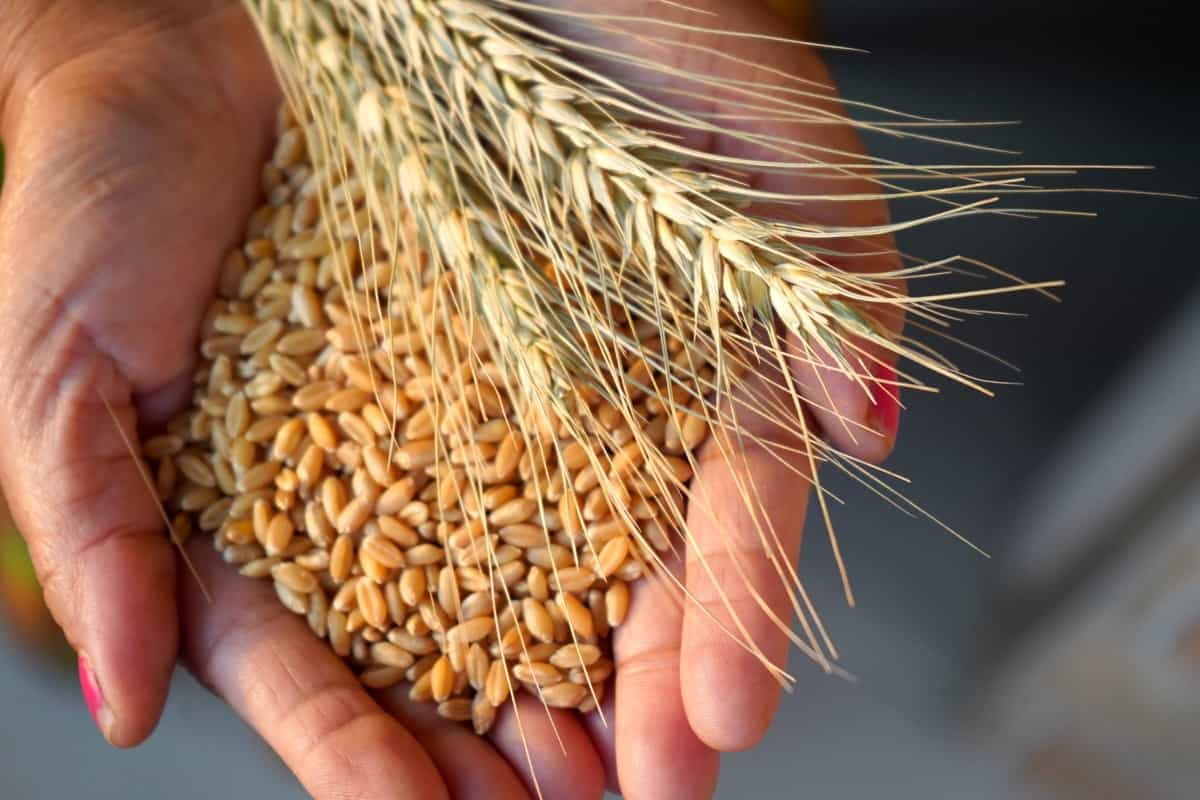
Conclusion
In India, high-yielding wheat varieties developed by institutions like IIWBR empower farmers with increased profits. These hybrid cultivars, adapted to various regions, offer disease resistance and improved yields, enhancing agricultural sustainability and economic gains for farmers nationwide.
- Types of Pesticides Used in Agriculture: A Beginner’s Guide
- Economical Aquaculture: A Guide to Low-Budget Fish Farming
- 15 Common Planting Errors That Can Doom Your Fruit Trees
- How to Make Houseplants Bushy: Effective Tips and Ideas
- Innovative Strategies for Boosting Coconut Pollination and Yield
- Pollination Strategies for Maximum Pumpkin Yield
- The Complete Guide to Chicken Fattening: Strategies for Maximum Growth
- Natural Solutions for Tulip Problems: 100% Effective Remedies for Leaf and Bulb-Related Issues
- Revolutionizing Citrus Preservation: Towards a Healthier, Greener Future
- Natural Solutions for Peony Leaf and Flower Problems: 100% Effective Remedies
- Maximizing Profits with Avocado Contract Farming in India: A Comprehensive Guide
- Natural Solutions for Hydrangea Problems: 100% Effective Remedies for Leaf and Flowers
- The Ultimate Guide to Choosing the Perfect Foliage Friend: Bringing Life Indoors
- From Sunlight to Sustainability: 15 Ways to Use Solar Technology in Agriculture
- The Ultimate Guide to Dong Tao Chicken: Exploring from History to Raising
- The Eco-Friendly Makeover: How to Convert Your Unused Swimming Pool into a Fish Pond
- Mastering the Art of Delaware Chicken Farming: Essentials for Healthy Backyard Flocks
- 20 Best Homemade Fertilizers for Money Plant: DIY Recipes and Application Methods
- How to Craft a Comprehensive Free-Range Chicken Farming Business Plan
- Brighten Your Flock: Raising Easter Egger Chickens for Beauty and Bounty
- How to Optimize Your Poultry Egg Farm Business Plan with These Strategies
- Subsidy for Spirulina Cultivation: How Indian Government Schemes Encouraging Spirulina Farmers
- Ultimate Guide to Raising Dominique Chickens: Breeding, Feeding, Egg-Production, and Care
- Mastering the Art of Raising Jersey Giant Chickens: Care, Feeding, and More
- Ultimate Guide to Raising Legbar Chickens: Breeding, Farming Practices, Diet, Egg-Production
- How to Raise Welsummer Chickens: A Comprehensive Guide for Beginners
- How to Protect Indoor Plants in Winter: A Comprehensive Guide
- Ultimate Guide to Grow Bag Gardening: Tips, Tricks, and Planting Ideas for Urban Gardeners
- Guide to Lotus Cultivation: How to Propagate, Plant, Grow, Care, Cost, and Profit
- Agriculture Drone Subsidy Scheme: Government Kisan Subsidy, License, and How to Apply Online
- Ultimate Guide to Raising Araucana Chickens: Breed Profile, Farming Economics, Diet, and Care
- Bringing Hydroponics to Classroom: Importance, Benefits of Learning for School Students
- Ultimate Guide to Raising Polish Chickens: Breed Profile, Farming Economics, Diet, and Care
- Ultimate Guide to Raising Australorp Chickens: Profile, Farming Economics, Egg Production, Diet, and Care
- Silkie Chicken Farming: Raising Practices, Varieties, Egg Production, Diet, and Care
- Sussex Chicken Farming: Raising Practices, Varieties, Egg Production, Diet and Care